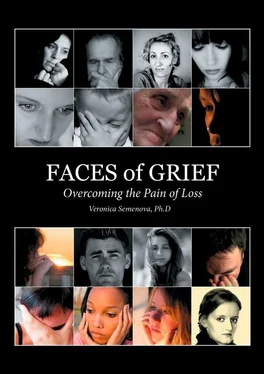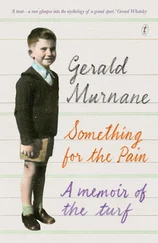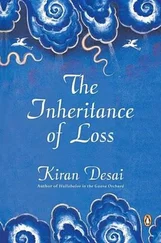Once you get over your grief, it never comes back
Stages of grief known as denial, anger, bargaining, depression, and acceptance may come and go in sequence and interchangeably. The duration and intensity of each stage may vary greatly. The stages can overlap or occur together, and a grieving individual can miss one or more stages altogether. It is also not rare for someone to go back and forth between the stages, as important pieces of information about the nature and causes of death come to light. New cycles of grief can be launched at milestone birthdays or anniversaries of the deceased or the bereaved person, and during major family events (the birth of children, the death of other family members, a family relocation, or the sale of the house where the deceased lived, for example).
It is better to avoid anything that reminds you of the deceased
Avoidance is the worst coping strategy in grief outside of denial. Even the most painful reality is better dealt with head on and with full realization of what has happened. Avoiding reminders of the deceased and denying a loved one’s death will only extend the time needed to come to terms with the loss and achieve acceptance. Denial and avoidance may come naturally as the first reaction to the shocking news; however, it should not last too long, as a healthy coping pattern requires that the grieving person should work through their pain and loss to restructure their perceptions to help themselves emerge from grief. Grief also comes in cycles, so it is normal to try and avoid reminders of the deceased loved one during these periods of intense longing. However, it is more helpful to dedicate a space and time in your life to purposefully embrace what seems to cause pain (photographs, personal belongings, letters) and celebrate the presence of the lost loved one in your life.
Feeling angry while grieving is not right
Anger is one of the healthy and normal feelings of grief. In fact, anger constitutes one of the five stages of grieving (denial, anger, bargaining, depression, acceptance). Anger is the first realization that the loss is real. Anger comes when the bereaved starts looking for something or someone to blame for the loss. It can revolve around the feeling of guilt for not protecting a loved one or not being there when they died. It is helpful to understand that anger in grief is not similar to anger in ordinary daily life. The cause of this anger can’t be undone: no one can make it right. Anger in grief is not directed at anyone in particular; therefore, it can involve anyone around the grieving person and even the grieving person him/herself.
Children need to be protected from death, funerals, and grief: they can’t understand it, anyway
Children at different developmental stages understand death, dying, and loss differently. However, as they mature, they often question the information previously received. Honest and clear explanations appropriate for the age of the child will help a child deal with loss and help them form a trusting relationship with the surviving significant adult. The child learns how to grieve by looking at parents, other family members, or significant adults in life. The way the child grieves the first loss and the coping mechanism and skills they learn while living through this loss will remain with them for life. If a child is shielded from any contact with pain, loss, and grief or is told fairy tales about what happened, he/she will form mental misrepresentations and misperceptions of reality that will block healthy and reasonable thinking and may become a foundation for future fears and phobias.
You can’t continue a relationship or communicate with your loved one after they die
Death ends a life, but does not end a relationship. Everyone who goes through the loss of a loved one will realize this. Relationships with a loved one carry on and continue for as long as they are remembered. The heritage of a person is formed through memories, photographs, and recalling the sayings, deeds, and impact your loved one had on your life. Many bereaved people report mentally talking to the deceased. When a very close person is lost, you would know how he/she would react to events happening in your life after the loss, what they would say, and what advice they could have given you. An ongoing mental connection with the deceased proves the strength of the bond that existed and allows the bereaved to feel the connection and existence of the deceased in their life.
The intensity of your mourning and grieving proves how deeply you loved the deceased
The intensity of grief and the intensity of mourning are not the same things. Grief is your internal reaction to the loss and mourning is the external display of grief. Very often, these two do not coincide. As we know, people often differ in how they express their emotions, depending on whether they are extroverts or introverts, on how close, understood, and accepted they feel in their social circle, and on many other factors. So if someone is not mourning their loss publicly, doesn’t cry, and doesn’t want to talk, it does not mean that the person doesn’t experience grief. What you show and what you feel can vary a lot. This is particularly true for children and adolescents who often have difficulty expressing their feelings in public, fearing judgment or feeling uncertain about how to do so simply because they have still not reached their emotional maturity.
People who have physical problems in grief must have been sick before
Grief causes many different symptoms affecting the psychological, behavioral, and physiological health of the bereaved. Physiological symptoms may include loss of appetite, sleep disturbances (feeling lethargic or not being able to sleep through the night), loss of energy and exhaustion, physical complaints similar to those the deceased had endured, drug abuse, and susceptibility to illness and disease. Previously healthy individuals may present with severely weakened health during and as a result of their bereavement. Through research in the last decades, we now know that grief is associated with an increased risk of illness, the most common being infections due to the weakening of the immune system as well as depression, anxiety, and other psychiatric conditions. Bereaved individuals are more likely to seek medical help as both outpatients and inpatients, and may use more medication. A grieving person will usually neglect his/her own health by not maintaining a well-balanced diet, forgetting to take necessary medications, not getting enough sleep, and not exercising. Some may abuse alcohol, smoke excessively, use drugs, or engage in other self-destructive behaviors.
Funerals and rituals are socially required: they play no role in accepting death or helping us heal
Cultural and religious traditions in memorial services and funeral arrangements serve a great purpose of providing a safe and calming environment allowing the relatives and friends of the deceased to mourn their loss. They instill order in the face of shock and overwhelming pain and serve as an important step in the process of grieving. The denial of loss will usually be resolved after the funeral, as obvious facts of saying good byes and burying the body make the reality of loss hard to avoid. And finally, even though we don’t like doing things that are socially required, knowing that the memorial service was attended by all those close to the deceased and the family of the deceased, who expressed condolences and grieved together with the family, also provides a soothing effect of knowing a family is not alone in its grief. The family also finds comfort in knowing that the deceased would have approved of the ceremony held in his/her memory and would have been touched by such an outpouring of kind words and memories and the support for his/her loved ones.
Читать дальше












